THE GOLD SMART GUARANTEE
Gold Smart promises to provide you excellent service and fantastic rates. Our commitment and professionalism to our customers has seen us quickly become a favourite choice for selling gold in New Zealand.
WE ENDEAVOUR TO BEAT ANY PRICE
In the unlikely event that you receive a higher offer for your gold, Gold Smart will endeavour to pay more!
We simply require a written offer from the New Zealand gold buying company that contains accurate weights, the purity of each gold item and the price offered.
THE FASTEST TURNAROUND TIME
At Gold Smart gold buyers we pride ourselves on being fast, friendly and professional. If you need your gold sold today – we promise to complete your transaction as quickly as possible. Typically we can help you immediately and put cash in your hands for the things you want.
FULL AND COMPLETE COMMUNICATION
With every purchase the Gold Smart team will guide you along each step of the way, making clear what to expect and helping answer any questions or reservations you may have. Rest assured you will feel comfortable and confident selling gold to Gold Smart.
KNOWLEDGEABLE AND PROFESSIONAL TEAM
We understand that selling your unwanted gold is something you may not have done before and you must feel we have your best interests at heart. Our professional team are experts in appraising the gold content and value of your items.
NO PRESSURE
The last thing you need is to feel pressured into selling your gold. At Gold Smart we promise to give you the right information and with no-obligation so you are free to decide if you sell or not.
NO HIDDEN COSTS
The price we offer you, is the total price and we promise there are no hidden fees or charges, with fair weights and measures.
Gold prices are up overnight by around US$20 per troy ounce, which has been seen as a positive move for gold. This was due to Bernanke’s cautious comments, some short-covering, safe-haven buying and perhaps sentiment over Egypt.
Gold prices have been showing strong signs of downward pressure the last few weeks so it’s great to have the trend take pause allowing customers to cash-in when the price rises. Gold prices are still at historic levels which means gold buyers like Gold Smart can help you exchange unwanted gold for something you can use – CASH.
The Gold buying team at Gold Smart have an excellent track record of providing excellent customer service, as well as a safe, comfortable, and easy to get to location. And the number one thing our customers say is that we pay the most. People consistently commented that they compared many ‘cash for gold’ outfits and the highest offers were made by Gold Smart of Auckland.
When selling gold in New Zealand be sure you talk with the friendly and knowledgeable professionals at Gold Smart!
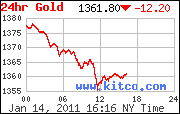 Wow, it’s been an exciting few weeks for Gold Prices!
Wow, it’s been an exciting few weeks for Gold Prices!
The price of gold per troy ounce and the price of gold per gram has been moving because of the international gold markets and foreign exchanges. Customers who decided to sell gold, gold jewellery, gold coins and gold bullion in New Zealand have benefited from strong gains in prices that mean GOLD SMART GOLD BUYERS can pay you MORE!
Overnight COMEX Gold has been hammered by -US$25 per OZ after BEN BERNANKE (Chairman of the United States Federal Reserve) hinted at stronger US Growth. Strong markets and good news from the US is generally bad news for the price of gold. As Gold Brokers we are holding our rates high as long as possible to pass on the best cash for gold possible to our customers. However we can’t hold our rates forever with gold prices showing strong downward movement – if you are considering selling gold (gold jewellery, gold bullion, gold coins, etc) the value of gold is still high.
Join the GOLD RUSH and SELL YOUR GOLD FOR CASH. Everyone has a different reason for wanting to sell gold or jewellery for cash. Whatever your reason, GOLD SMART offers a fast and friendly service that puts a cash in your hand when you need it, satisfaction guaranteed. Contact the team today to see how easy it is to receive hundreds, if not thousands, for your gold jewellery.
FREE PHONE: 0800-465-376

Whew! Christmas has gone and New Years Resolutions will start to be tested as 2011 gets underway!
As professional Gold Buyers we understand that Christmas spending can put families under pressure, not to mention holidays, travel, purchases and just the rising price of food! It can be tempting to pay using credit – to have something now is quite powerful in motivating us to indulge in expensive items that perhaps we should avoid. The big trap for many is the high interest rates that many credit providers charge, including the simply evil rates that ‘Pawn Brokers’ use to trap Kiwis into.
Selling gold can be a very effective way to create additional capital for families. When considering selling gold in New Zealand you’ll need to be sure you are selling gold to a gold buying company that provides the best rates, full privacy and discretion, personal and friendly service and knowledgeable staff. It’s not worth taking the risk – your intuition is a great asset when considering which gold buying company to sell to. Customers say that “Gold Smart is the ONLY choice!”
It’s incredible how a small amount of gold jewellery can add up to a significant amount of CASH. It may only be a few handfuls of gold jewellery that you are considering selling – yet that could be several hundreds if not thousands of dollars. Imagine what you can use this money for…
For the best price for your gold – call Gold Smart Gold Buyers Today! 0800-465-376
 Mmm, gold… gold has been held up for a long time as something precious, a rare commodity and something that Pirates love to seek – Gold Treasure!
Mmm, gold… gold has been held up for a long time as something precious, a rare commodity and something that Pirates love to seek – Gold Treasure!
Gold Jewellery because of it’s precious metal content has value beyond how nice and pretty the manufacturing may be. And often that can mean even more cash for your old, damaged and out-of-style gold jewellery. When you are considering to sell gold jewellery the most important thing to consider is – where to sell gold jewellery?
In New Zealand there are a few options when selling gold that customers should be aware of because most people don’t want to be ripped off and treated badly. At Gold Smart we’ve heard so many unfortunate stories from customers about selling gold jewellery to other companies that nothing much surprises us!
Just because a company is advertising that they pay the best rates, does not actually mean they pay the best rates!
Customers say the last place they wanted to sell gold was a Pawn Shop because they are used to dealing with people that are desperate for cash and offer the equivalent service. These types of situations are unfortunate because these people will often take whatever they are offered because they need the money urgently. This is very similar to the companies that offer loans, pawnbroking, advances on salaries, finance and so on – all designed to take advantage of the desperate and vulnerable.
Who you sell to is also a very important choice because you want to know you are selling gold to a 100% New Zealand Owned Company and that the income generated stays in New Zealand to benefit the local economy. Any company that’s not 100% NZ owned will have overseas interests and will likely be sending profits out of this country to benefit wealthy people that don’t care about the people of Aotearoa.
When you Sell gold to Kiwi companies that employ Kiwis and retain all profits in New Zealand the whole country benefits.
The next point to consider when you want to sell gold jewellery is how private and confidential is the service. Do you want other people looking over your shoulder and seeing you sell the family gold? Will you feel comfortable selling your gold to a teenager that clearly is not an expert in precious metals? Do you trust someone that offers loans to vulnerable people? Do you feel safe taking your gold jewellery to a public place?
At Gold Smart we offer complete and total security, privacy and comfort!
Cash! Who doesn’t like cash for gold? At Gold Smart we don’t have the large overheads of shops or kiosks in shopping malls so we can pay more for your gold jewellery! Enjoy the benefits of high rates for your gold today.
Call 0800-GOLD SMART (0800-465-376) Now to see how you can get cash for your unwanted GOLD JEWELLERY!

Santa’s (Siberian Husky) Reindeer
Wow, it’s only 12 days until Christmas! If you’re looking for money for gold then you call sell your gold to Gold Smart – The Gold Buyers paying cash 4 gold!
Gold Smart will buy any kind and carat of gold making it easy when selling gold jewellery. Customers often ask us how they can sell gold for the best prices and the answer is simple – come to Gold Smart first!
We have made the process of getting money for gold a breeze – we look at three things: the carat of gold (so how much gold do the items contain), what’s the precise weight in grams (gold price per gram) and what’s the international gold spot price (converted to New Zealand dollars).
Selling gold has never been so easy and with record high gold prices you can forget hoping to strike it rich at the casino – the real gold is waiting in your jewellery box!
Gold Smart is NOT a pawn shop or a Kiosk in a Shopping Mall – we are Gold Buyers that buy gold (and silver) paying you fantastic rates that give you more.
Call us today for a FREE quote on any gold and silver jewellery items you may have. We buy gold in ANY condition!
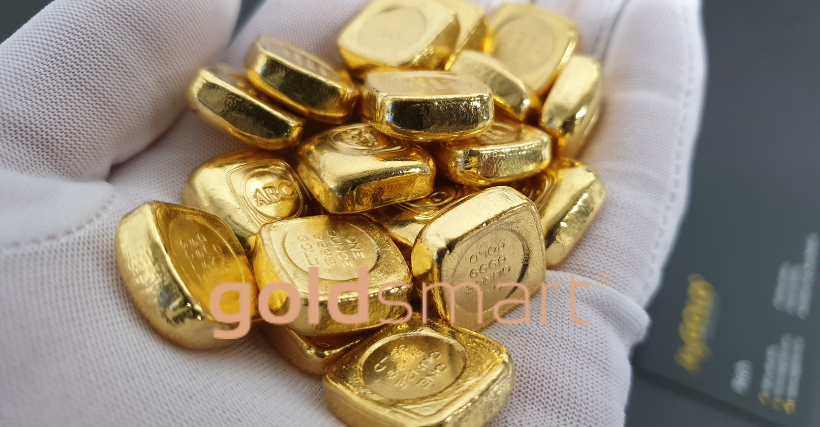
It’s interesting when you lead from the front because others tend to follow and as we’ve experienced – competitors simply try to copy Gold Smart!
As the old saying goes leaders lead and followers follow… and when you are unable to lead you are forced to follow – stuck as an imitator. Some companies that offer to buy gold in New Zealand simply look at what others do well and try to copy them. This may be seen as a quick way to make up for lost ground, however, they will never lead and be seen by customers as less than genuine.
As with the Gold Smart name, philosophy, brand, values, reputation, and loyal customer base – you need to think independently to succeed. We’ve been fortunate to have a multi-talented and creative team focused on building unique customer experiences. It goes without saying that a “leopard can’t change it’s spots” however much they try… if the core values of a company are not aligned with what they are trying to tell customers about their services it will be incongruent and easily recognised.
Like a Wolf in Sheep’s clothing they can’t say they will provide honest transactions and that they care about the customer when their actions show the opposite is true. Customers can see through the deception.
Being Gold Buyers in New Zealand the team at Gold Smart has had to be very innovative and creative in our marketing and branding. And it’s quite flattering when competitors attempt to imitate us – in some cases:
- Stealing our text copy (word for word)
- Using similar photography and design
- Calling us pretending to be customers trying to find out information and
- in other cases actually sending “spies” to us under the false pretense of being genuine gold sellers!
Apart from wasting our time and theirs it shows a lack of initiative, dishonesty, and laziness!
Gold Smart really does think differently and if you’d like to experience our amazing customer service – please call today 0800-GOLD SMART (0800 465-376)

“The Golden Santa”
Christmas is just around the corner and you’ll soon be bombarded with messages about shopping, sales, presents and giving. It can be a stressful time of year for many families especially if money is tight and things are not planned well. This can be especially true for families with kids and the demands to make the Christmas experience enjoyable and memorable for them.
We’ve compiled some easy tips for how to save money this Christmas!
- Plan it! Before you shop or do anything create a plan of what you’d like to achieve, what memories you want to create and what your budget will be.
- Use Discount Cards! If you do decide to buy presents then discount cards are a great way to make your money go further.
- Use Envelopes to Allocate Cash! Throw away the credit cards and apportion your gift money into envelopes – this way you avoid overspending and can remain within budget.
- Have a Secret Santa! See if your family is happy to give only one gift to one person – the giver can remain anonymous and you can even set a maximum dollar amount such as $20.
- Give Time! Remember that what makes Christmas and the Holidays memorable for many people is the gift of time spent with loved ones – what memories and experiences would make your Christmas Golden?
- Sell Gold! If you have unwanted, worn or damaged gold jewellery consider selling it to raise spending money for Christmas – You’ll be amazed with what your items are worth!
“Gifts of time and love are surely the basic ingredients of a truly merry Christmas.”
~ Peg Bracken.
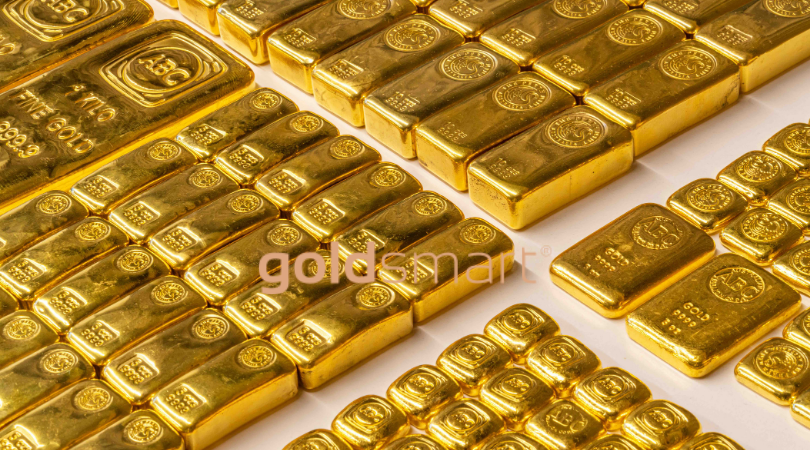
As one of the most original and natural elements of earth, gold tends to be responsible for creating quite a ruckus in known and recorded history. Basically, a shiny metal ore that, unlike its other metal cousins, glistens with a yellow color, gold has been practically useless on a functional level for centuries. Only in the 20th century and forward has gold finally found a home as a practical resource as well, particularly in the connection of digital and audio relays and related wiring. That said, gold over history has been worth far more than just cabling. Entire wars have been fought over gold, and even in modern times it is still used as an alternate reserve of value and worth even though the metal itself produces nothing.
Gold Ore
In natural form, a gold ore piece or nugget can be found in the earth or within other rock in what looks like a malformed shape most of the time. This is typically because due to gold’s low melting temperature, it can liquefy easily, working its way into cracks and cavities of other rock still in solid form under the same heat exposure or higher. Gold nuggets are typically found in granite, commonly found in quartz, and can even run in streaks or veins through other types of rock. As the earth becomes exposed and erodes, gold breaks apart and into smaller pieces, often being washed away and ended up in watersheds such as streams, creeks, and rivers miles away from its original location. During the late 1800s, gold drove a tremendous migration to the California region of the western U.S., and much of it was found either in mountain river beds or caves and cracks in the Sierras themselves. Eventually, most of the manual material available in the world that could be picked and pried open has been found, with an occasional odd finding still happening here and there. Most gold nugget findings today occur with full-blown mining operations that dig up thousands of tons of earth for a couple of dozen pounds of the gold at best.
Every small gold nugget found in history or in modern times was part of what is known as an original lode. This is usually a large clump or long vein of a gold collection that separates over millions of years and becomes smaller and smaller with natural earth movement. Those pieces found in water have often been polished due to the multitude of contacts and impacts with soil and other rocks while being moved by water. Over time, waterborne nuggets become extremely rounded and polished, unlike their cousins that are attached to or picked out of a solid rock.
Despite rumors over the years that it might be possible in the right conditions for gold to reassemble itself into larger nuggets, that idea was completely dismissed in 2007. Based on extensive research analyzing Australian nuggets it was made clear that natural gold only exists from fragments and lodes that were originally created deep inside the earth subjected to high heat and immense pressure, the kind of elemental forging that only happens in the same place volcanoes come from. There has never been any kind of natural process that recombines gold at the Earth’s surface-level via any other type of natural process.
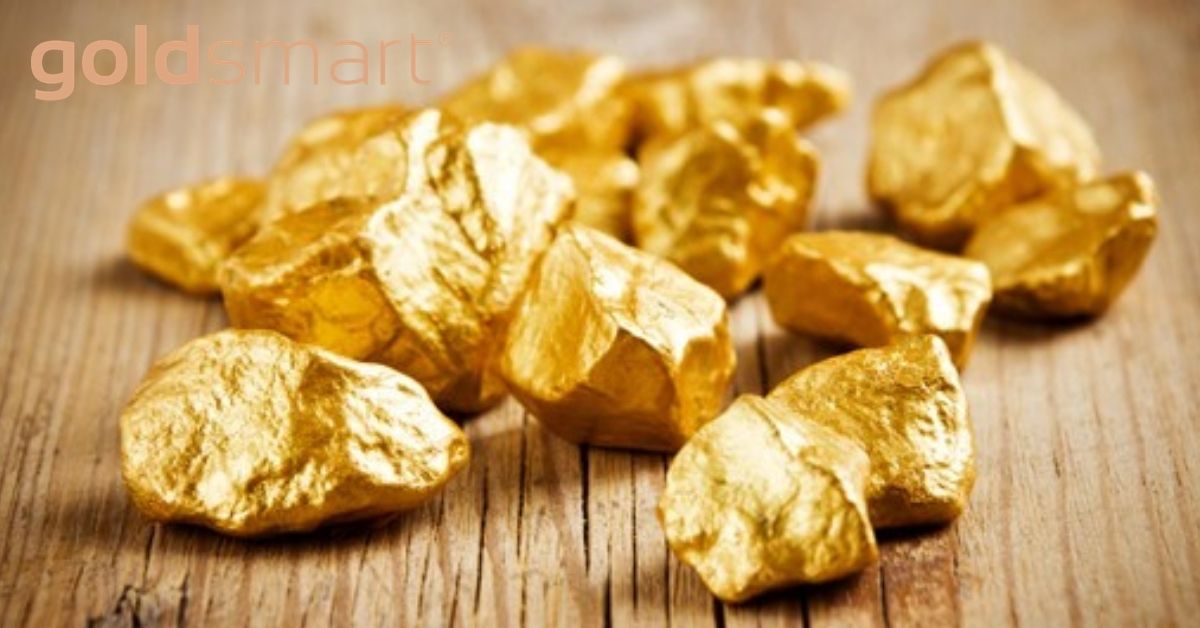
The Purity of Natural Gold
When found in natural form, a gold nugget tends to range anywhere from a 20-carat purity to as much as 22 carats (i.e., 83 percent to 92 percent). The higher purity nuggets seem to generally be found and located in the Southern hemisphere in places like Australia and Southeast Asia. On the other hand, poorer quality nuggets tend to be located far north in places like Alaska and Canada. The purity of nuggets is so distinct that it affects the color of the metal in natural form. In general, the richer the yellow color of the nugget, the higher the purity content will be. That said, nuggets have been exposed to the mixing of elements, and it is quite common to find nuggets with bits of other metals mixed in such as copper and even silver. All three are softer metals and the liquifying effect deep in the earth would easily swirl and combine such metals together randomly. For example, where gold has been mixed extensively with silver, it becomes a unique alloy known as electrum.
Interesting History Associated with Gold
The Romans were quite enamored with gold, referring to it in Latin as the “shining dawn.” That interpretation was produced by the term “aurum” which in turn produced centuries later the elemental symbol of gold, Au. The reference to the purity of gold is also rooted in ancient times as well. The carat is a word that comes from the carob seed. These plant seeds were used as a standard weight. Since most merchants were able to get their hands on them, carob seeds became an industry metric which eventually led to the word, carat. Ancient trade was not limited to the Mediterranean; gold was found, harvested, and sought after in trade everywhere from China to South America to Asia. And it was one of the driving forces that caused exploration and connection of different lands and people to each other, many times forcibly.
Overall, the greatest amount of gold collected by recorded human effort over the centuries is estimated to equal approximately 165,000 tonnes, at least as of 2009. Of all that discovery, the largest nugget weighed in at 78 kg and was found in Victoria, Australia as late as 1869. The second-largest nugget was also found in Australia in Ballarat, it was approximately 7 kg lighter. In comparison, the largest gold nugget produces halfway around the world in California during the Gold Rush only scored a measly 6.25 kg in comparison. That said, it outsized anything else found in the U.S., so the nugget still gets to hold reign in the California State Mining Museum. Think all the gold of sizable proportions has been found? Think again, in 1980 a beautiful unit was found in Australia again, but this time with a metal detector.
Despite the world land surface having produced a considerable amount of gold, the ocean floor is estimated to have eight times the amount found on land. Of course, the problem is finding it underneath the ocean water. For centuries, the cost of diving has been prohibitive, making the effort impractical. However, in recent years advances in technology have allowed greater and greater reach to the ocean bottom, and that is producing a greater opportunity for additional harvesting. In short, some estimate some 10 billion tons of gold sit captured inside the oceans of the world.
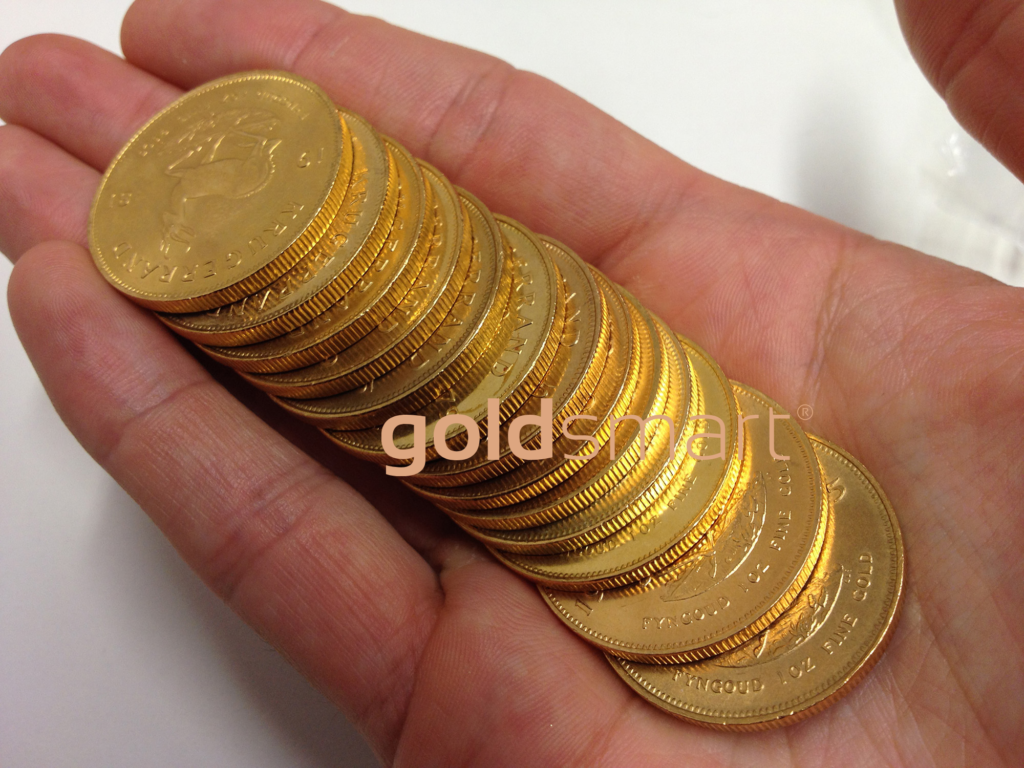
Gold Form in History
While gold is mentioned tens of thousands of years earlier, the first recorded jewellery made by human hands dates back only to 3,500 B.C. That said archaeologists know that gold metal in natural form has been around a lot longer, having found bits of it on tools and in work pits of Neolithic sites as well.
Because of the metal’s natural softness, gold was a very easy material to work with once ancient jewelers started to figure out how to work with it. Well before refined melting was applied, gold could be hammered into shapes from its natural form because it was so shapeable. This allowed gold to be used both as main pieces as well as accents to other assemblies. In fact, gold could be hammered so thin, one could see light through it as the metal still held shape. For example, one ounce today can be mechanically flattened to as much as 300 square feet, an amazing feat.
The strengthening process of gold for more practical uses such as worn jewellery requires it to be purposefully contaminated with other metals. Melted and remixed into an alloy with other metals such as copper and silver, gold gains structural strength. This allowed gold to be used in chains, rings, bracelets, and necklaces, all of which would last longer being worn as a result. However, that also decreased the value of the gold, and even today gold jewellery is rated and valued by its gold content, with 10-carat gold being the lowest value and 22 to 24-carat gold being the highest and most expensive.
Gold is now regularly being used in minute amounts in computer technology and for the last two decades, it has been a hot commodity for telecom and audio equipment as well. This high tech demand has increased the consumption of gold by industrial channels and has actually fomented an industry now focused on harvesting gold from old computer and technology equipment once it becomes outdated and obsolete. While no one is going to get rich quick gutting their old computer motherboard, companies and outfits that harvest metals from motherboards and chips by the hundreds and thousands have found it to be profitable.
Finding Local Help with Gold and Selling Gold
At Gold Smart, we provide a reliable and local New Zealand resource for selling Kiwi gold as well as for those interested in buying the precious metal. Because we have been so connected in the gold market, Gold Smart remains one of the most established and outstanding New Zealand experts on gold as well as the resale of second-hand gold from coins, jewellery, bullion, and similar. If you’re looking to liquidate personal jewellery made from gold or interested in purchasing gold for investment, give us a call or email. We provide a no-pressure environment and are quite happy to help educate anyone on gold aspects and how they impact a customer personally. To find out more reach out and one of our buying experts or salespeople will help you through the rest.
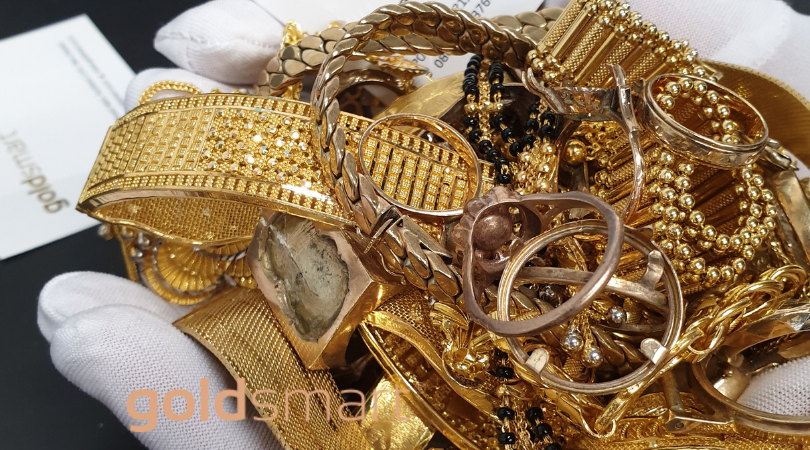
There is no question that having a good idea what kind of gold and silver jewellery one has on hand can become valuable information in the future, especially if the same person expects that at some point the same valuable precious jewellery will be sold again in the future. Ideally, one would want to receive more in value than what the jewellery was paid for originally. However, if a jewellery owner doesn’t have a good idea what’s in his or her possession, then there’s a very good chance that person could end up selling very valuable jewellery for a lot less than what it is really worth on the gold or silver recycle market. So how does one get a gold or silver jewellery value? A lot depends on what tools are being used for valuation.
The Retail Value
The price that was paid for a gold or a silver jewellery item when first bought is the retail value. That price could be through a jewellery dealer, a store, an online order, or even another private seller. But the point is the same: retail value is the cash paid for the jewellery item by a consumer without the intention of reselling the jewellery as part of a business to another consumer. That might seem like a complicated definition, but it is what applies to most people who buy jewellery for personal use.
However, retail value has nothing to do with what the gold or silver jewellery is actually worth. Why? Retail value hides a lot of what is known in the trade as markup. This is the additional pricing value that is included in the retail price that has nothing to do with the manufacturing or the supply/material value of the given jewellery. Instead, markup is pure profit charged on top of the item to make it available to a willing, buying consumer. Some of this cost goes to running the jewellery business, some of it to fees and licensing, and much of the markup goes to the business net profit, i.e. the pockets of the business seller’s bank account.
So, if one is expecting that he or she will be able to buy gold or silver jewellery for one value and then turn around and sell it for a positive gain soon after, think again. The retail value of the jewellery is marked up so high, any kind of a recent resale for quick investment would likely end up in a significant loss.
Instead, once the jewellery is bought at retail, it drops in value immediately. This price change impact is known in the market as “depreciation.” It works the same way as the value of a new car dropping as soon as the vehicle is driven off the car dealer’s lot. Depreciation reduces a jewellery item closer to its real value for the owner, oftentimes as much as 30 to 45 percent of the retail value paid.
How do retail businesses sustain such high jewellery prices for gold and silver items then? A lot of the support comes in the fact that so many different businesses are involved in getting gold and silver from a deep hole in the ground to the retail hands of a consumer. The business of harvesting gold and silver from the Earth is not a simple issue of sitting in a river and panning for it. The far large majority of gold and silver used in jewellery-making comes from industrial mining which, to put it simply, takes a lot of money to operate and pull off at a company level. Once enough is harvested to make a gross profit as a mining operation, the company then moves the raw ore into refining or sells it to companies that smelt the ore to turn it into the actual gold or silver used for jewellery manufacturing. From there additional companies take the raw metal as supply and convert it into a saleable product. That jewellery inventory is then sold to middlemen dealers who provide the same inventory to retail sellers such as consumer stores and retail jewellery dealers. This entire chain adds layer upon layer of cost, which ultimately becomes the retail value of the jewellery sold to the end consumer.
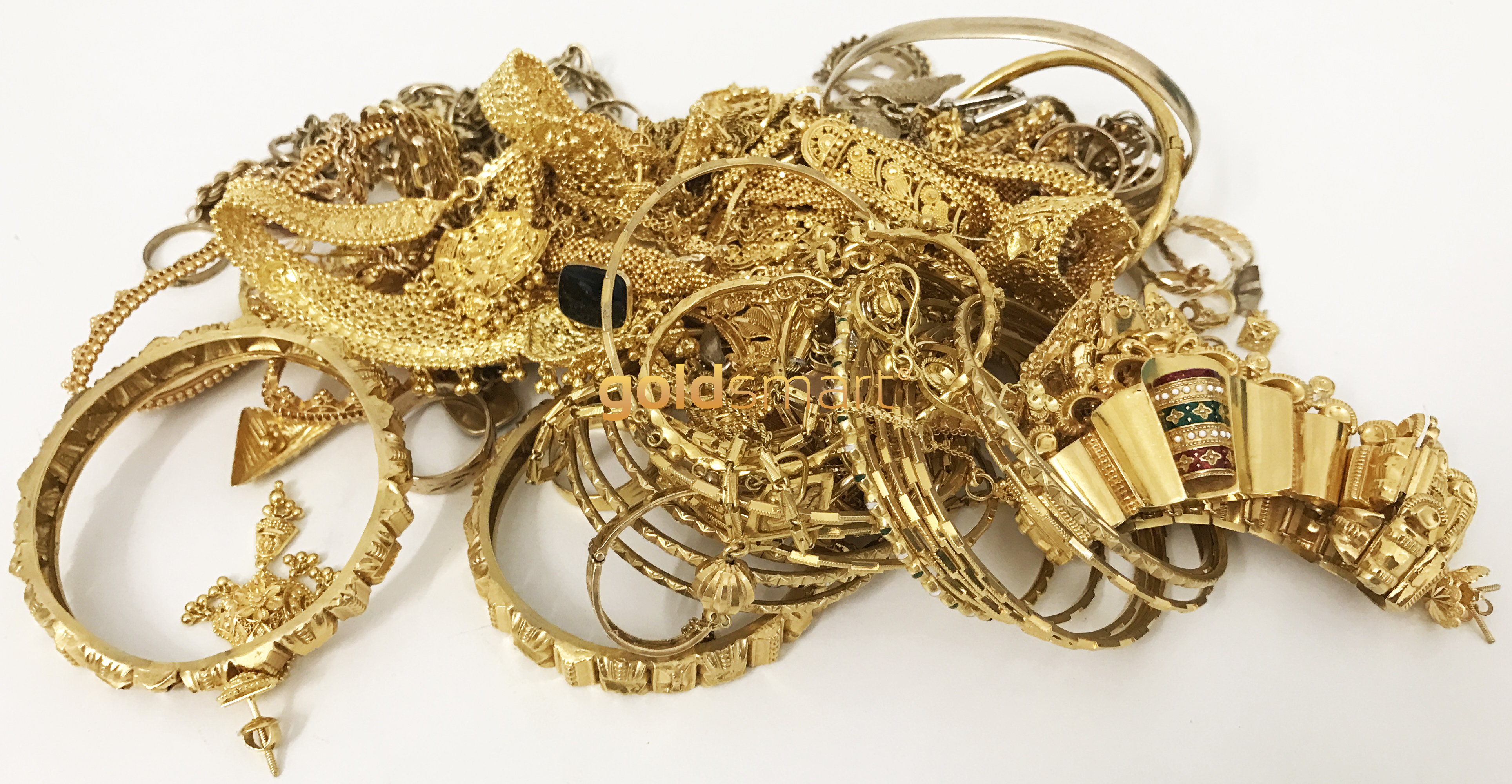
Insurance Coverage Value
The value of a jewellery item covered by an insurance policy is known as the insurance coverage value. This is a price point that an insurance provider identifies for a jewellery item in terms of what it would take to replace that gold or silver piece if it were lost or stolen. The consumer then pays a fee or premium to put the insurance in place, and the provider takes on the risk of protecting the jewellery item. If nothing happens, the provider gets to keep the premium paid by the consumer as pure net profit. If the jewellery item is indeed stolen or lost in a way covered by the insurance policy, then the consumer receives cash value to replace the item again. However, while people often think this is a great way to value gold or silver jewellery objectively, the value provided is only within the insurance policy contract. It has no applicability in any other financial setting. This tends to be a bit of a surprise for folks who don’t understand the limitation of personal insurance coverage.
The Gold & Silver Recycle Value
The third valuation is the recycle value of gold or silver. This is based on a starting point with the spot value of gold or silver and works downward based on the quality of the metal the jewellery is made out of, the costs the buyer has to address to run their buying business, and the quantity of the gold or silver involved. The other variation then tends to be how much the buyer negotiates the personal seller to reduce their price by when the jewellery is sold.
The gold and silver markets move up and down every day with speculation and investment. That in turn changes the value of precious metals. However, when focusing on how to value your jewellery, the first place to start is with the jewellery itself. If manufactured by a well-established gold or silver manufacturer, the item will have hallmarks and quality stamps on them. These markings identify the type of precious metal and quality included. Additionally, they also identify the manufacturer in some cases when it applies. You can use these markings to identify the quality involved which gives you as the owner a start in terms of categorizing the recycle value of the jewellery involved. The calculation process is fairly mathematical. The spot market price assumes the purest level of gold or silver involved. For gold, that is 24 carat quality. If the gold jewellery, however, is 12 carat, then its quality is 50 percent the value per every troy ounce. Obviously, personalized jewellery is based on standard weight, so identify the weight, convert it to a troy ounce value, and then calculate the 50 percent carat value times the number of troy ounces. The result is the raw spot market value of the jewellery item.
With the above in mind, then comes the work of finding a gold buyer who will come close to the raw value with an objective, fair recycle price value for your gold or silver jewellery. A consumer will not be paid the exact spot market value of the metal. Even gold and silver buyers have to run their businesses, pay bills and make a margin that allows them to stay in business and grow as well. So, there will be a natural markdown from the spot price of gold or silver. However, how much of a markdown is involved can be wildly different from one buyer to the next. And there are a lot of buyers out there ranging from private buyers looking to make a profit on speculation to part-time businesses managing precious metal buying on the side, to professional gold and silver buyers who make a solid business of consolidating precious metals to resell to the industrial side for bullion or bulk supply.
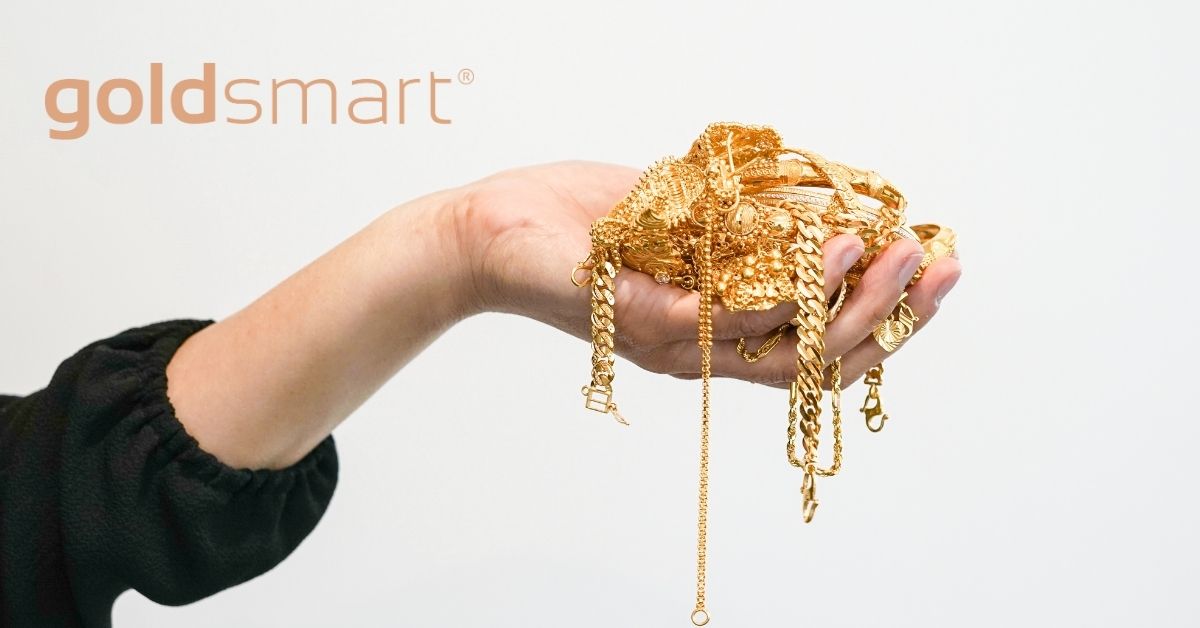
Cut to the Chase With a Professional Buyer
You could spend a lot of time trying to find reputable gold and silver buyers and then trying to compare them against each other for the best resale value. This will require a lot of work and, to be honest, it will cost you a lot of time and travel money. Believe it or not, there’s a better way. By simply working with Gold Smart you’re already interacting with one of New Zealand’s best precious metal buyers right from the start. Gold Smart has earned this reputation through many years of hard work, protecting their customers and personal sellers, providing safe channels for gold and silver resale, and providing one of the best and most objective resale price values for precious metals bought from consumers. In short, Gold Smart hits all the big points that make them one of the best gold and silver resale buyers to work with. And when you try your first sale with them for your gold or silver jewellery, you’re going to ask yourself why you didn’t so earlier after your first experience. Even if you decide not to sell your gold or silver jewellery, you will have a very good idea how much it is worth, why and how that was identified.
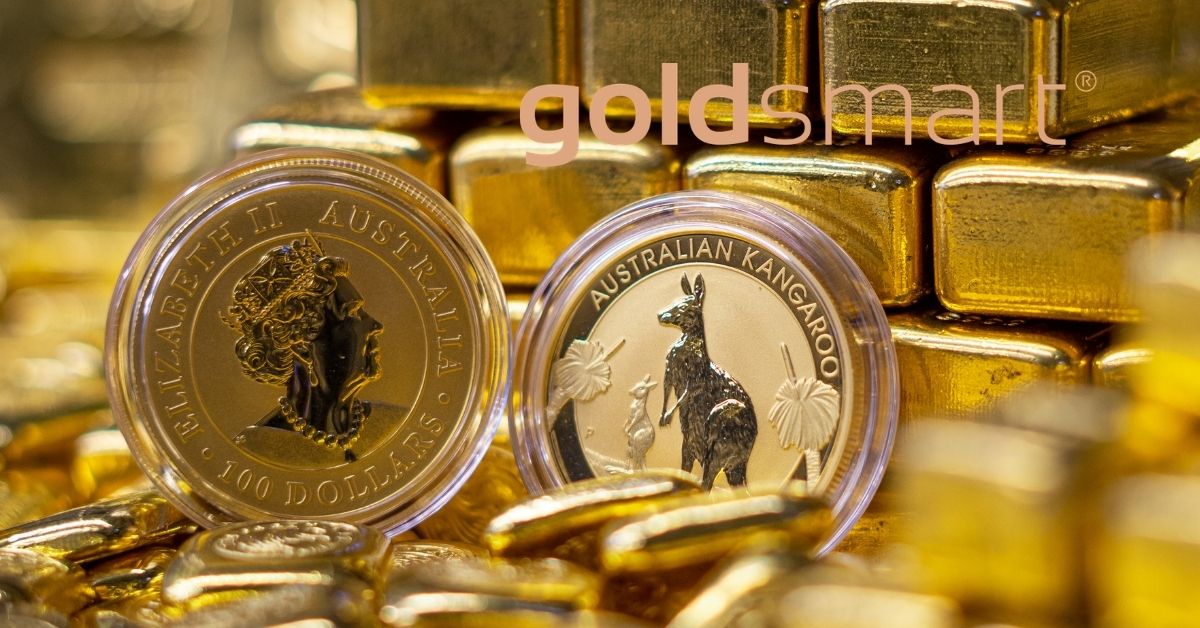
With gold continuing to maintain a high price value, the benefits of selling gold also continue to produce cash value benefits for those who sell the precious metal. However, there are multiple risks and traps for those who try to do so, regularly working against personal sellers to separate them from their gold. And, unfortunately, because personal buyers are usually not used to selling gold on a regular basis, they make for very vulnerable victims who can be duped and tricked on a regular basis all the time. No surprise, New Zealanders can be forgiven for being hesitant to sell their gold even with the high prices. It’s not that people are greedy and want to hold on to higher prices; they are cognizant that risks continue to be high for those trying to sell gold to be swindled by active criminals posing as valid gold buyers.
Selling your gold in New Zealand doesn’t need to be hassle or a risk
Gold scams generally tend to fall into two categories: scammers offering to sell gold and instead steal people’s money from them with fraud, and people offering to buy gold and trying to avoid paying a fair price for it. The second category matters the most for those with gold already and looking to sell what they have.
It’s well understood that there are lots of gold buyers, even in New Zealand. They range from some of the most professional buyers that are well-established and set the standard for the market to private characters who appear one day and are gone the next. Their skill and knowledge span a sizable range as well. While some have extensive expertise in testing and understanding how to evaluate gold, others don’t even have an idea how to differentiate between gold carats. Others purposefully try to argue with personal sellers, hoping that by bullying customers into selling their gold under pressure, they can get the gold at a lower price than what it is really worth.
With a top professional gold buyer, there is never any confusion about what kind of gold they are evaluating or looking at, and there is no bullying involves with regards to trying to pressure a personal seller into agreeing to lower prices than what is fair. Remember, your brain has multiple ways that it picks up and understands your environment. The problem is that most of us don’t always pay attention to all the signals. For example, it’s quite common for people to suddenly become anxious when they are sensing a risk but not sure what it is or where it comes from. The brain is picking up stimuli and release hormones in the body to get prepared. However, the logical side of the mind isn’t quite understanding what’s going on immediately, or how to translate the stimuli. So, it stays confused or ignores the issue because the signs don’t align with what the brain expects to comprehend with social norms and expectations.
The reality is, we should be listening to all our senses, especially when they are picking up signals of risk that is near us. That’s why personal sellers get apprehensive when a supposed buyer is starting to put on the squeeze to pressure a personal seller into a lower, undesirable price point for gold being sold. Trust your gut and walk away from situations that are not comfortable. It’s your subconscious trying to warn you what’s obvious, but your logical brain can’t see it yet.
However, other scams are not so blunt or overt such as hard pressure. Instead, they use subtle administrative sleight of hand to dupe a personal seller out of value. Many times less reputable gold buyers will use fees and various complex paperwork to push personal sellers into legal-sound commitments. The goal, of course, is to create additional means by which to lower the actual amount of money paid for the gold bought. The fees and their descriptions can vary, but they all serve the same purpose: reduce the amount of cash paid for the gold being sold. These administrative fees will typically come in the form of made-up “taxes” and permit fees. They will also be present in the form of “test” fees to evaluate the gold, with the buyer arguing he has to cover the cost of a testing service and it’s not his fault the fee eats into money eventually paid.
The third type of scam involves duping the personal buyer with the quality of the gold involved. This is both sleight of hand and pressure tactic, even if the seller does actually know the type of gold that is involved. It starts out with gold that doesn’t have a clear identifier such as quality code, a marking for the carat type, or a manufacturer’s mark. Because the personal seller can’t use anything objectively, the person becomes vulnerable to a buyer who puts on a hard act arguing that his immediate testing is showing that the gold to be sold is not 18 or 22 carat gold, as the personal seller thought, but in fact far cheaper 10 carat gold. The buyer puts on the pressure that his testing tools prove the case, and the personal buyer feels embarrassed. The situation works to the buyer’s advantage, and there’s a high likelihood he gets the gold for cheap, with the personal buyer self-doubting his or her own knowledge about the item, coin, or jewellery.
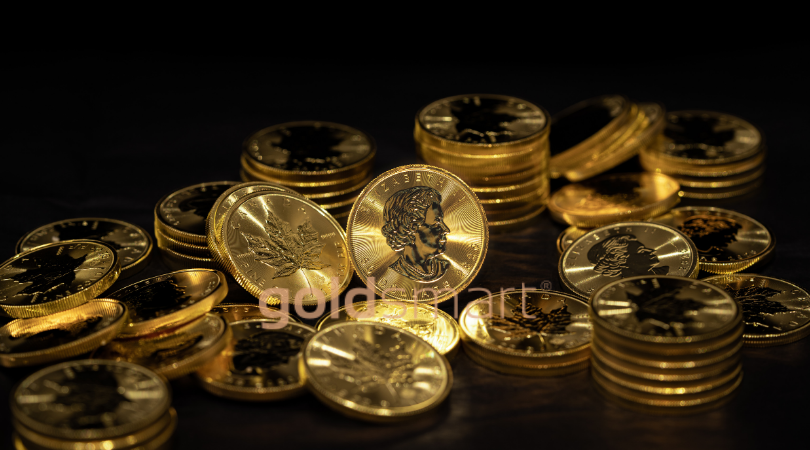
Taking Advantage of Desperation
While not a scam, the fourth problem could arguably be compared to one given how it works. A number of less-than-stellar gold buyers focus on people who need cash right away and are desperate to sell their gold for it. Oftentimes involving personal gold sellers who are in financial problems, owe money, or are dealing with an emergency, the approach focuses on the positioning. These types of gold buyers emphasize quick cash without questions and easy selling. However, they have no intention of providing a fair value based on market prices for recycled gold. Instead, they purposefully low ball prices hard, knowing darn well that the personal seller that comes to them is already under significant stress and demands to get cash quickly. These types of buyers aren’t situations in nice offices or the good part of the neighborhood. They are purposefully positioned in lower-income neighborhoods and areas, knowing the likelihood of desperate customers are far more common there.
These outfits are most commonly found operating as pawn shops or payday loan offices or side businesses at a local corner market or similar. They work with the same clientele who are looking for small, short-term cash loans and are willing to provide valuable personal property as collateral for it.
Convenient Buying
The next problem buyer tends to be the gold party buyer or short-term local town visitor. These types of gold buyers operate as private buyers versus regular businesses with a brick and mortar address. They will work through a local who is already knowing, usually paying the person a fee for the liberty to have the gold meeting or sale at the person’s house or public business, such as a local hotel conference room or a pub. Once the logistics are in place, then the person goes around town advertising a willingness to buy personal gold on the spot with ready cash. However, the opportunity is only available that night or for a weekend. After that, the buyer will be gone. So those who have gold to sell need to take advantage of the chance and do so then. This urgency approach works on the idea that most people would like to have ready cash immediately and don’t want to go out of their way to find a regular gold-buying business. So, convenience and familiar social pressure work their magic to make the sale happen. Unfortunately, the gold buyer then tries to pay at a very low price level, usually 10 carat levels for higher quality if possible. The buyer makes off with success if personal sellers agree.

The Right Way to Sell Your Gold
The first step anyone should take with selling personal gold is to first understand what you have in hand. That means going through all your gold items and personally identifying what is possible in terms of accurately categorizing your gold. First, look for any hallmarks, stamps, or manufacturers’ marks on your gold. These aren’t always in the most obvious or visible places. However, some might actually exist. So, go over all your gold carefully. Use glasses if your eyes need help or use a magnifying glass. Your ego is not at issue here.
If you do not have any marks, check to see if you have any paperwork on your gold. Coins actually tend to be fairly easy if government-issued. They are measurable and trackable, which helps to identify their issue, their gold quality, and their collectability if that applies as well. Jewellery can be harder. Ideally, the jewellery has paperwork from a recognized manufacturer and can be identified. Where so, you can then confirm the gold quality involved as well. If, however, your gold has no marks, no paperwork, and no history, then you are best served by getting it appraised first before selling. Doing so helps you confirm an expert opinion for your gold’s worth before going into discussions with a gold buyer. That appraisal fee might seem like an extra cost, but knowing the difference between your gold being 18 carat and 10 carat can more than pay for the fee with plenty of value left over to cover a lot more.
A Dependable Solution
Selling your gold in New Zealand doesn’t need to be a hassle or a risk. Instead, you can safely sell your second-hand, unwanted, or scrap gold without worry as well as obtain fair pricing for your gold with an objective evaluation. And, there is no pressure to sell. How is all this possible, unlike the problem of gold buyers that seem to be so prevalent? One name: Gold Smart. As one of New Zealand’s most established and reputable gold buyers, Gold Smart has serviced customer after customer, buying gold at fair prices and providing New Zealand a dependable means for selling unwanted gold for value, cash, and liquidity. So, when it’s time to sell your Kiwi gold, don’t play games with buyers who don’t have your best interest in mind. Gold Smart will always work fairly with you. We value our customers and reputation far more than a quick sale. You will always have your best option and gold sale with us at Gold Smart.
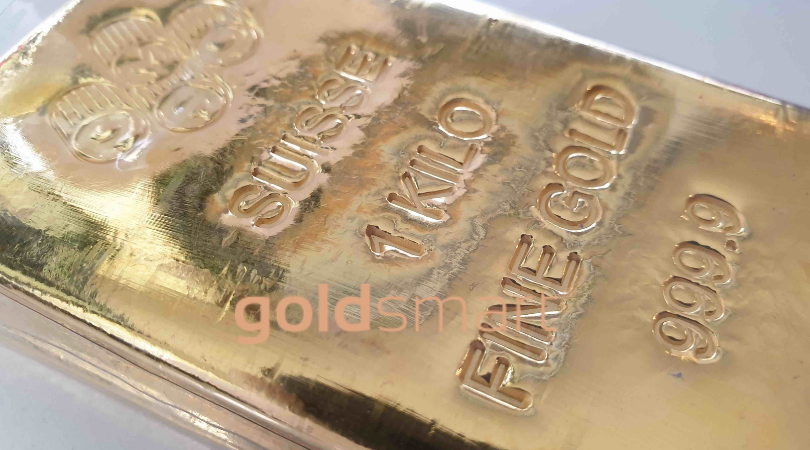
A year ago, people were expecting that gold was going to go through another breakout by 2021, especially if the COVID pandemic was still in place and economic conditions were still shaky. Well, here we are a month into the new year of 2021 and, unfortunately, there has been no breakout per se. Instead, the crypto markets gobbled up some $200 billion in discretionary funds from December 1 to January 15, money that might have been used otherwise to pump further into gold as a hedge. Unfortunately, the lure of quick gain turned into a route as the fear of missing out or FOMO took over everyone and even more money was thrown into crypto as a result. That dampened gold and caused the precious metal to hit a plateau that has continued, ranging from a low of $1,850 to $1,940. So, exactly what can one expect from gold prices going for the new year as a result?
The idea that there will be a breakout grows weaker and weaker, and many more are worrying that gold has finally reached its ceiling only to start falling back down again in a serious retraction. After all, gold spot prices have been on a steady decline from August 2020, slowly working their way back down to the price point of mid-2020. After that, a further decline would definitely be entering into correction territory. Gold isn’t going to suddenly go cheap anytime soon; it has a long history of being valuable, but the question is how much it will change going forward matters.
Digital Markets Didn’t Help Matters
Let’s start with what we know that will affect the price of gold going forward. The aforementioned crypto surge seems to have run its course and lost steam. Bitcoin reached above $40,000 a unit and then fell back, although multiple surges kept bringing money back in. However, the profit-takers pulled steam out of the cryptocurrency channels and the digital coins no longer seem to have sufficient steam to go higher. In fact, for many who have held on from just the last three years, the profits already in place are immense and very tempting. And that will also trigger further deflations and limiting for additional spikes for the next few months as well. In short, the promises of crypto have begun to disappear, which will drive folks to look for value gains elsewhere.
International Markets are Peaked
The stock market has also been continuing to steam forward, on a long tear since 2019, only to be interrupted by the COVID scare of March 2020. Right now, the market continues to be close to hits the highest peak worldwide. The U.S. Dow Jones, for example, continues to ring in at 30,211. The high peak it had prior to the COVID dip was just under 29,000. Similarly, the Hong Kong Exchange has been on a long run upwards as well, at least since 2016. It has jaggedly been rising from a low of 19,605 in 2016 to a rocket of 29,419 as of the beginning of February 2021. Similar behavior has happened with markets around the world. And, like all good things, bull markets do come to an end, rather dramatically at times. Given how much steam has been built into the markets, they too are primed to start giving up gains and dropping as well. Mathematically, the dynamics are still in place for further rise, but stock markets rarely follow math models in a vacuum.

Politics Are On the Move
Let’s turn to the international politics as a third element. Europe has gone through its own throes with Brexit being finalized. And, the most immediate impacts have been, predictably to England’s inconvenience. However, the rest of Europe’s powerhouses have generally stable, having put in place numerous safeguards as a result of the 2009 Recession that ricocheted across Europe painfully after the U.S. economy stumbled. People haven’t forgotten the collapses that occurred in Greece a decade ago as well as in Iceland, and how much France and Germany had to bail everything out. If nothing else, the European stalwarts tend to be fairly conservative after being burned.
On the American side, obviously, the U.S. elections have ended with a new president presiding over the country and a new political party in charge. If anyone thought that’s simply a matter for folks over the pond, then it would be dismissing the interconnected economic impact of American spending around the world. And with a political position now that is far more interested in pumping money into social programs, the business side of things may begin to feel a dampening effect as well as increased regulation and taxation once things stabilize. It’s not really conjectured; U.S. Democratic policies tend to historically be heavy on government spending and a burgeoning price tag later on.
On the Chinese side of things, the Asian giant has been heavily spending, but it also has a considerable amount of funds locked up in other nations’ debt as well. That has provided an incredible amount of income for additional assets and resources for the country’s government. Combined with the consolidation of control over Hong Kong as well as the massive push on all fronts for China’s interests in international building, the country is positioned well to continue growing and taking over economic territory from what used to be American and European business interests. As a result, it would be realistic to expect that China will continue to push in 2021 for greater economic territory, as well as challenging former paradigms to increase its benefits. That will create instability and flux in the Pacific and South Pacific markets as well as even the African continent.
Gold Doesn’t Have a Strong Argument for Another Rise
In short, the major dynamics that significantly impact the value of spot gold are in play to drive it further. However, if there is a sudden cash shortage as what happened in 2009 when credit was frozen up, insufficient funds will be on hand to take advantage of the need for gold as a safe harbour to protect the value that suddenly starts to deflate in markets, assets, and financial holdings.
So how should one hedge this market now in 2021 without losing one’s shirt? Well, fortunately, for those who already have gold on hand, things are still essentially very rosy. Let’s be practical; those with personal gold have likely had it for at least the last two to five years at a minimum. Even recent holdings in the form of jewellery, accessories, coins, bullion and similar, will have appreciated significantly. And for those who are seeking to recycle their gold for cash, 2021 is still a very good time to do so regardless of what’s going on with the world outside.
Yes, the dynamics of what is happening in the world, whether it be the market or international politics, doesn’t bode for a strong argument of gold rising further. In fact, most indicators are continuing to push for a correction in the next few years across the board, including crypto, markets, and gold altogether. These things will all return eventually, but for those who are interested in taking their return, 2021 may very well be the year to finally really let go of unwanted gold now for its full potential and cash value. While there is no such thing as a perfect prediction on gold prices, it would be shocking to see gold spike again given the circumstances of things right now for the next 12 months. Then again, surprises can happen.
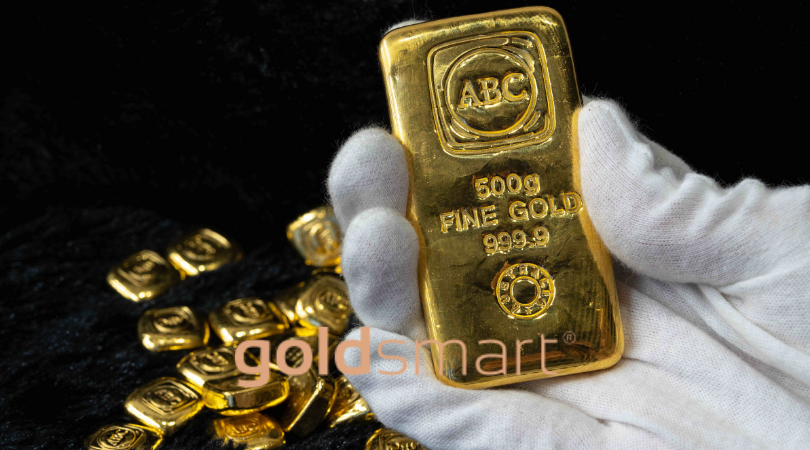
What to Expect When Selling Gold Now
Just about everyone has gold of some sort. Whether it is scrap gold, gold jewellery, gold coins, gold bullion, or any other type of gold, it has value. Even silver, palladium, and platinum pieces fetch good money. Bring your gold coins, bars, and other precious metals to Gold Smart for a fair appraisal. You can use the proceeds to purchase whatever your heart desires.
Take a moment to think about how long it has been since you used your gold items or even looked at your gold. Now think about how many times you have used that gold jewellery or other gold pieces. If you have paid attention to the price of gold, you are aware this precious metal has significantly increased in value across the past decade. Now is the time to sell your gold, cash out, and enjoy life. After all, there is no guarantee the price of gold will continue to increase or even stagnate. Why not sell your gold to Gold Smart? You might be surprised as to how much cash you can still get for your old gold, scrap gold, broken gold items, dated gold jewellery, and other precious metals.
Currently, the price of gold is still in a healthy range of $1,850 USD per ounce. This could literally mean you are still sitting on a gold mine with your old, damaged, or simply out of date gold jewellery. If you agree that you’re ready to sell gold and take advantage of where the price is now versus where it could be in 2022 and forward, especially given the above factors, then Gold Smart can help you today. Our team can expertly evaluate and grade your gold items for their best recycle value and sale price. There’s no need to go through middlemen, online auctions, or sketchy corner store buyers. Give Gold Smart a call today to find out more. We are able to address gold buying in-person as well as online with a secure courier. No lot is too large or too small and, best of all, Gold Smart provides one of the most reliable and safe channels for gold selling in New Zealand, as it has year after year.